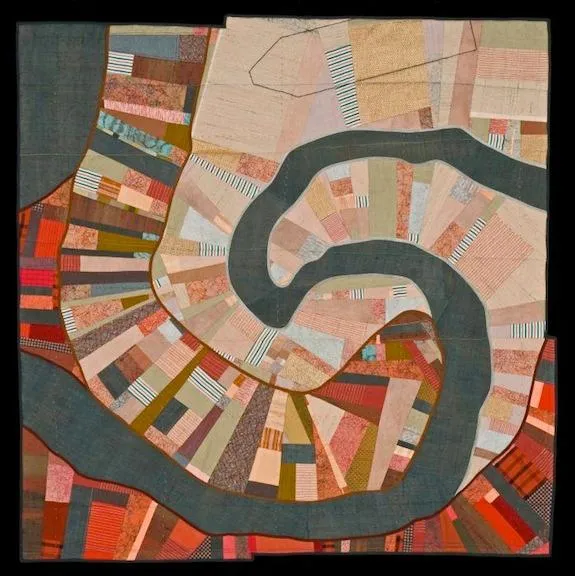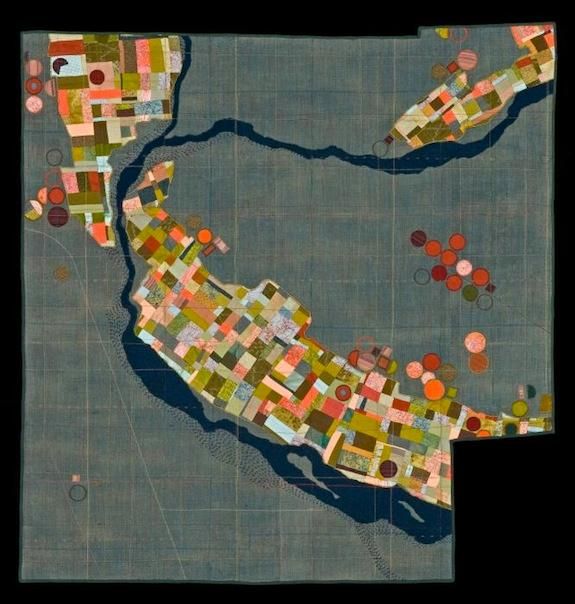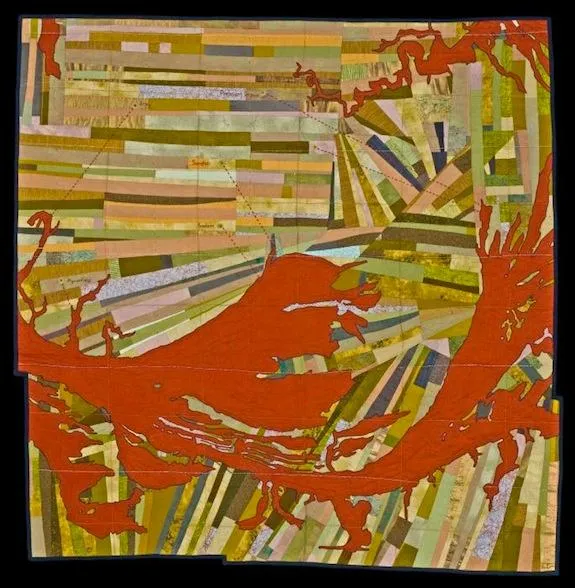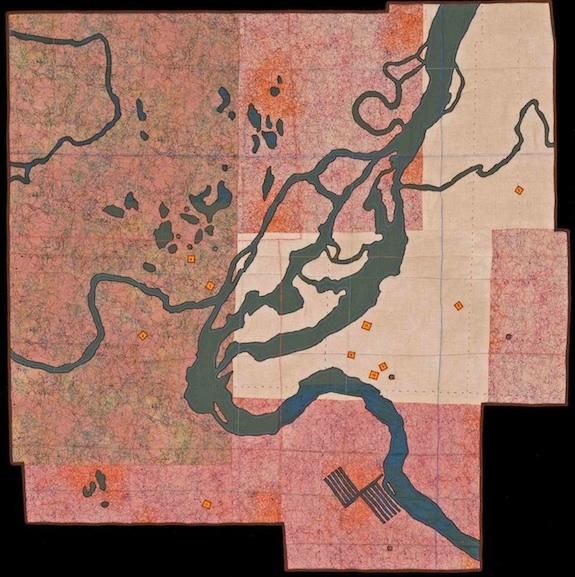At the Smithsonian Craftshow: Textile Topographies
Leah Evans, whose work is for sale at the annual Smithsonian Craftshow, creates wall hangings from abstracted geogrpahies
/https://tf-cmsv2-smithsonianmag-media.s3.amazonaws.com/filer/20130426093043Survey_Thumb.jpg)
Though she doesn’t consciously start with a place in mind, Leah Evans says her textile wall hangings often end up becoming their own kind of geography. Taking the aesthetic of soil surveys, agricultural plots and maritime maps, Evans creates colorful abstractions of familiar forms, some of which are up for sale at the annual Smithsonian Craft Show through April 28. These zoomed out views offer serene meditations. Evans also takes the close-view in her work, echoing microscopic imaging. The two perspectives, from landscapes to cells, share a certain symmetry. At its core, our world is built up of color and line. To create her works, Evans uses a Kenmore sewing machine, chalk, needles, rulers, compass, staple gun, and scissors, as well as synthetic dyeing, needle-felting and hand printing.

A somewhat fantastical but true tale informs this piece, titled “Lost Boat.” While visiting the Steamboat Arabia Museum in Kansas City, Missouri, Evans learned about the strange fate of the pre-Civil War steamboat, the Arabia. Lost for 132 years after sinking in the Missouri River, the boat was finally found far about a half-mile inland. Over the years, the river’s course had meandered from its previous location. (The Army Corps. of Engineers has since “set” the river so it can’t wander as it once did.) Evans included an outline of the boat in the upper right corner. She says, “I used pieced materials to show fields and top stitched binding to show present and past outlines of the river, including the current “set” boundary to explore how humans both shape their environment and are shaped by it.”

The patchwork look of this work, “Green Satellite,” is borrowed from satellite imagery of irrigated farmland. Evans used repurposed fabrics, including upholstery and vintage kimonos for a unique palette.

Unlike many of her pieces, this work is an actual map of a specific location: Gee’s Bend, Alabama. Evans says it was inspired by J.R. Moehringer’s Pulitzer-Prize winning article, “Crossing Over,” which includes the passage:
It won’t look all that dramatic, just a new ferry taking a 63-year-old great-grandmother and her cousins across a Coca-Cola-colored river. But in this damp cellar of the Deep South, where the river has separated blacks and whites for 180 years, where even the living and the dead are less divided than the black and white towns camped on opposite shores, a new ferry will be like the river itself: more than it looks.
The area’s history lies in a community of freed slaves who managed to make a thriving life for themselves despite marginalization. They also created a legacy of master quiltmakers. Evans says, “The pieced sections of land reference the strip quilting of the women and property divisions common to the South. . . .The place names are those of existing cemeteries and the dotted lines represent the passage between the graves and the river.”

The pink stain of this piece, “Cranberry Farm,” references the fruit that inspired it. Evans’ home state of Wisconsin also hosts many cranberry farms and even the Cranberry Highway which drives right through the heart of cranberry country.
Evans says people often ask her about the places she represents. But most aren’t based on anywhere in particular. ”For me they are intimate explorations of map language and imagined landscapes. Through my research and experience, I have decided that maps create more questions than they answer.”
The Smithsonian Craftshow is on view April 25-28, 2013 at the National Building Museum and all of the proceeds benefit the Smithsonian Institution.
/https://tf-cmsv2-smithsonianmag-media.s3.amazonaws.com/accounts/headshot/Leah-Binkovitz-240.jpg)
/https://tf-cmsv2-smithsonianmag-media.s3.amazonaws.com/accounts/headshot/Leah-Binkovitz-240.jpg)